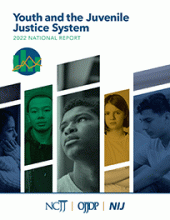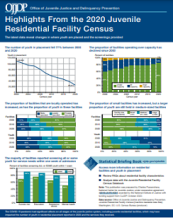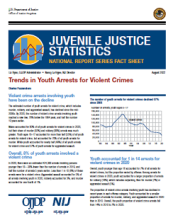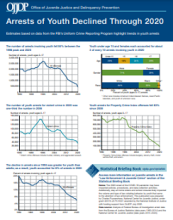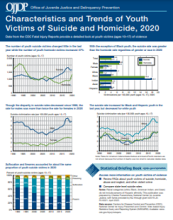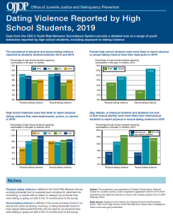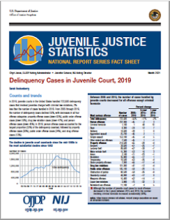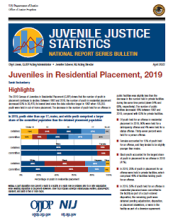Statistical Briefing Book
Youth and the Juvenile Justice System: 2022 National Report
Data Visualization presents National Trends for Youth in Residential Placement
Highlights From the 2020 Juvenile Residential Facility Census
OJJDP/NIJ Fact Sheet Reports Decline in Arrests of Youth for Violent Crimes
Trends in Youth Arrests for Violent Crimes
OJJDP/NIJ Bulletin Summarizes Patterns of Juvenile Court Referrals
Statistical Briefing Book Offers Data Snapshot on Trends in Youth Arrests
Arrests of Youth Declined Through 2020
Characteristics and Trends of Youth Victims of Suicide and Homicide, 2020
Dating Violence Reported by High School Students, 2019
Delinquency Cases in Juvenile Court, 2019
Juveniles in Residential Placement, 2019
Youth population at risk
For delinquency and status offense matters, this is the number of children from age 10 through the upper age of juvenile court jurisdiction. In all states, the upper age of jurisdiction is defined by statute. In most states, individuals are considered adults when they reach their 18th birthday. Therefore, for these states, the delinquency and status offense youth population at risk would be the number of children 10 through 17 years of age living within the geographical area served by the court.
Weapons offenses
Unlawful sale, distribution, manufacture, alteration, transportation, possession, or use of a deadly or dangerous weapon, or accessory, or attempt to commit any of these acts.
Violent Crime Index
Includes murder and nonnegligent manslaughter, forcible rape, robbery, and aggravated assault.
Vandalism
Destroying or damaging, or attempting to destroy or damage, the property of another without the owner's consent, or public property, except by burning.
Upper age of juvenile court jurisdiction
The oldest age at which a juvenile court has original jurisdiction over an individual for law-violating behavior. It must be noted that within most states there are exceptions to the age criteria that place or permit youth at or below the state's upper age of jurisdiction to be under the original jurisdiction of the adult criminal court. For example, in most states if a youth of a certain age is charged with one of a defined list of what are commonly labeled "excluded offenses," the case must originate in the adult criminal court. In addition, in a number of states, the district attorney is given the discretion of filing certain cases either in the juvenile court or in the criminal court. Therefore, while the upper age of jurisdiction is commonly recognized in all states, there are numerous exceptions to age criteria.
Trespassing
Unlawful entry or attempted entry of the property of another with the intent to commit a misdemeanor, other than larceny, or without intent to commit a crime.
Stolen property (buying, receiving, possessing)
Buying, receiving, or possessing stolen property, including attempts.
Status offense
A nondelinquent/noncriminal offense; an offense that is illegal for underage persons, but not for adults.
- Curfew violation - Violation of an ordinance forbidding persons below a certain age from being in public places during set hours.
- Incorrigible, ungovernable - Being beyond the control of parents, guardians, or custodians.
- Running away - Leaving the custody and home of parents or guardians without permission and failing to return within a reasonable length of time.
- Truancy - Violation of a compulsory school attendance law.
- Underage drinking - Possession, use, or consumption of alcohol by a minor.
Simple assault
Unlawful threatening, attempted inflicting, or inflicting of less than serious bodily injury, in the absence of a deadly weapon. The term is used in the same sense as in UCR reporting. Simple assault is often not distinctly named in statutes since it consists of all assaults not explicitly named and defined as serious.
Sex offenses (except forcible rape, prostitution, and commercialized vice)
Statutory rape and offenses against chastity, common decency, morals, and the like. Attempts are included.
Robbery
Unlawful taking or attempted taking of property that is in the immediate possession of another by force or the threat of force.
Prostitution and commercialized vice
Sex offenses of a commercialized nature, such as prostitution, keeping a bawdy house, procuring, or transporting women for immoral purposes. Attempts are included.


